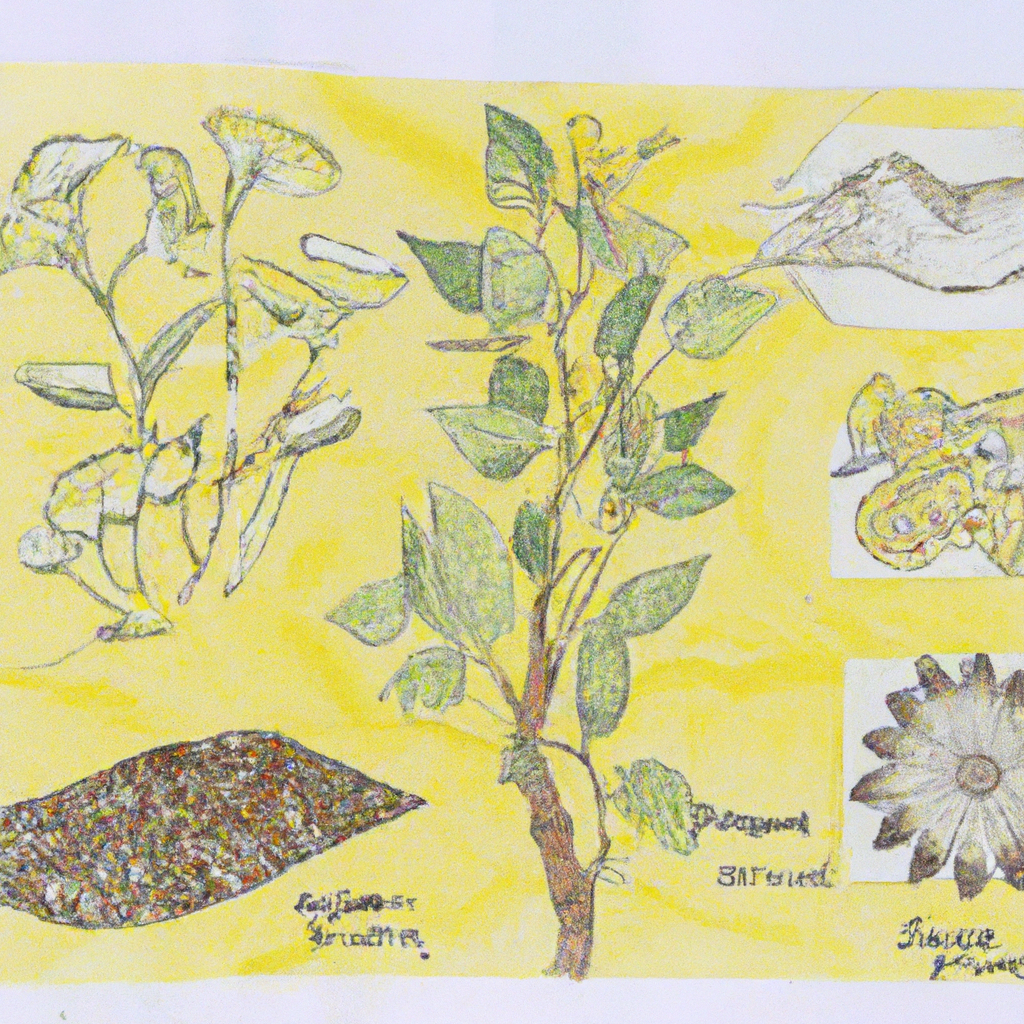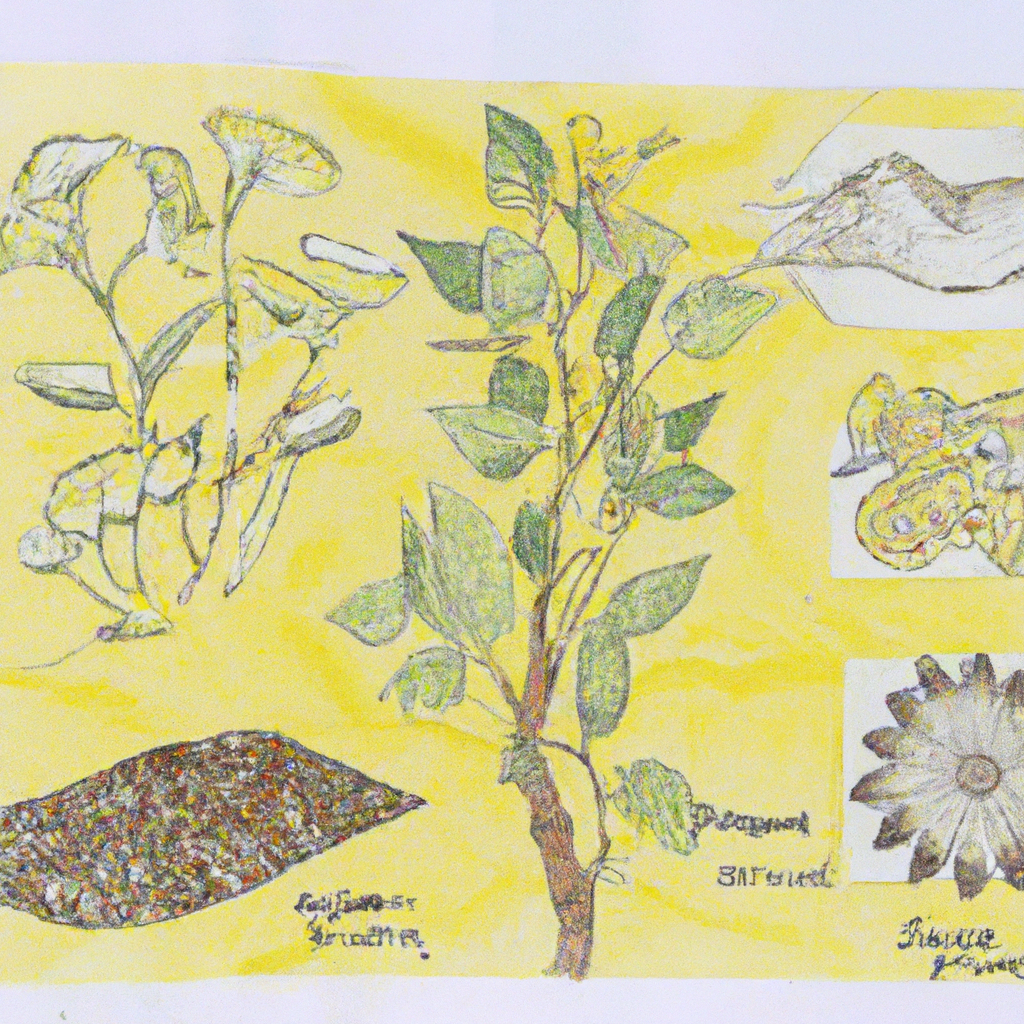Imagine strolling along the lush, vibrant landscapes of Hawaii, surrounded by an array of breathtaking flora. In this captivating article, we explore the profound significance of native plants in Hawaiian culture. From their traditional uses in ceremonies and healing practices to their role in preserving local ecosystems, discover how these indigenous plants have shaped the rich tapestry of Hawaiian heritage. With every hibiscus and plumeria blossoming under the warm sun, immerse yourself in the enchanting world of Hawaiian native plants and the deep-rooted connection they hold to the island’s cultural identity.

The Importance of Native Plants in Hawaiian Culture
Introduction to Hawaiian Culture
Hawaiian culture is deeply rooted in the land and the natural resources that have sustained the Hawaiian people for centuries. Native plants play a vital role in Hawaiian culture, with their significance encompassing various aspects of daily life, traditional practices, and spiritual beliefs. The rich diversity of native plants in Hawaii reflects the unique ecosystems of the islands and holds immense value in preserving the cultural heritage of the Hawaiian people.
Background on Native Plants in Hawaii
Hawaii is home to a vast array of native plant species, many of which are found nowhere else in the world. These plants have evolved over millions of years in the isolation of the Hawaiian Islands, resulting in a remarkable level of endemism. Native plants in Hawaii include a wide range of species, from iconic trees like the koa and ohia to delicate ferns and vibrant flowers like the hibiscus and maile. These plants have adapted to the different microclimates and ecosystems across the islands, showcasing a unique botanical tapestry.
1. Native Plants as Vital Resources
Traditional Uses for Native Plants
Native plants have been essential resources for the Hawaiian people throughout their history. They were used for various purposes, such as constructing houses and canoes, making tools, and crafting traditional attire. The bark of the wiliwili tree, for example, was used to make clothing and cordage, while the koa tree provided durable wood for canoes and weapons. The versatile uses of native plants demonstrate the deep connection between the Hawaiian people and their natural surroundings.
Medicinal Properties of Native Plants
Native plants have long been valued for their medicinal properties in Hawaiian culture. The traditional healing practices, known as la’au lapa’au, utilize various plants to treat ailments and maintain overall well-being. For instance, the noni plant was used to alleviate pain and inflammation, while the mamaki plant was consumed as a herbal tea to aid digestion and promote relaxation. The extensive knowledge of native plant medicine continues to be passed down through generations, preserving an important aspect of Hawaiian healing traditions.
Food and Nutrition from Native Plants
Native plants have provided sustenance for the Hawaiian people throughout history, offering a diverse range of nutritious foods. Staple crops such as taro, sweet potato, and breadfruit were cultivated, while native fruits like the ‘ulu or breadfruit and ‘ohelo berries provided additional sources of nutrition. The ti plant, known for its starchy root, was used to make poi, a traditional Hawaiian dish. These native foods not only nourished the Hawaiian people physically but also played a significant role in cultural practices and celebrations.
2. Native Plants in Daily Life
Ornamental Plants and Landscaping
Native plants are highly valued for their aesthetic beauty and are widely used in landscaping across the islands. The vibrant flowers of the hibiscus, plumeria, and bird of paradise are commonly seen adorning gardens and public spaces. The iconic lei, a symbol of Hawaiian hospitality and aloha spirit, is often made using native flowers and leaves such as maile and pikake. The presence of native plants in daily life adds to the vibrant and colorful character of the Hawaiian landscape.
Symbolic and Spiritual Significance
Native plants hold symbolic and spiritual significance in Hawaiian culture. They are deeply intertwined with ancient Hawaiian mythology and are believed to possess mana, or spiritual power. The maile plant, for example, is considered sacred and is used in ceremonies to invoke blessings and protection. The ti leaf is used in traditional ceremonies, such as blessings and rituals, to ward off evil spirits and promote good fortune. These plants serve as tangible connections between the spiritual realm and the physical world, embodying the essence of Hawaiian spirituality.
Traditional Crafts and Artwork
Native plants have played a crucial role in traditional crafts and artwork, showcasing the ingenuity and creativity of the Hawaiian people. Plants such as the lauhala, a type of pandanus, are skillfully woven to create intricate baskets, mats, and hats. The koa tree’s beautiful wood has been carved into exquisite bowls, calabashes, and other ornamental objects. Native plants provide a sustainable and renewable resource for artisans to express their cultural heritage through craftsmanship, ensuring the preservation of traditional art forms.
3. Conservation and Preservation Efforts
Threats to Native Plant Species
Despite their cultural significance, native plant species in Hawaii face numerous threats to their survival. Habitat loss due to urbanization and invasive species introduced by human activities pose significant challenges to the native flora. Invasive plants like kiawe and strawberry guava outcompete native species, disrupting the delicate balance of Hawaii’s ecosystems. Climate change also presents a threat, causing shifts in rainfall patterns and increasing the susceptibility of native plants to diseases and pests.
Importance of Native Plant Preservation
Preserving native plants in Hawaii is vital not only for cultural reasons but also for ecosystem health and biodiversity. Native plants have co-evolved with the islands’ unique ecosystems, providing habitat and food sources for numerous endemic animal species. By conserving native plants, we can protect the intricate web of life that makes Hawaii so ecologically exceptional. Additionally, native plants serve as a living link to the past, enabling future generations to connect with their cultural heritage and maintain a sense of identity.
Conservation Organizations in Hawaii
Several organizations in Hawaii are dedicated to the conservation and preservation of native plants. The National Tropical Botanical Garden is actively working to protect and propagate endangered native species through its various gardens and research facilities. The Nature Conservancy and the Hawaiian Islands Land Trust focus on acquiring and managing lands to safeguard important habitats and restore native plant populations. These organizations collaborate with local communities, landowners, and government agencies to collectively address the challenges facing native plants and promote sustainable conservation strategies.

4. Native Plants in Traditional Medicine
Traditional Healing Practices
In Hawaiian culture, traditional healing practices have long relied on the medicinal properties of native plants. Healing practitioners, known as kahuna la’au lapa’au, utilize a holistic approach to treat various ailments, taking into account the physical, mental, and spiritual aspects of a person’s well-being. These practices emphasize the importance of restoring balance and harmony within the body and the surrounding environment. Traditional healing ceremonies often incorporate chants and rituals, along with the administration of herbal remedies derived from native plants.
Specific Native Plants Used in Medicine
Numerous native plants are used in traditional Hawaiian medicine due to their therapeutic properties. The ‘awa plant, also known as kava, is used as a relaxant and anti-anxiety remedy. It is often consumed as a beverage during special occasions and social gatherings. The mamaki plant, traditionally consumed as a tea, is believed to alleviate symptoms of indigestion and promote sleep. Other native plants used in medicine include the noni plant for its antibacterial and wound-healing properties and the ‘olena or turmeric for its anti-inflammatory effects.
Revival of Traditional Healing Practices
In recent years, there has been a resurgence of interest in traditional Hawaiian healing practices and a renewed focus on incorporating native plants into modern healthcare. Efforts are being made to revive and protect traditional knowledge through educational programs and collaborations between healers and Western medical practitioners. By integrating traditional healing practices with modern medicine, there is an opportunity to create a more holistic healthcare system that respects the wisdom of the past while embracing advancements in science and technology.
5. Native Plants in Hawaiian Cuisine
Traditional Hawaiian Foods
Native plants play a central role in traditional Hawaiian cuisine, which is deeply rooted in the bountiful offerings of the land and sea. Traditional Hawaiian foods include staple crops like taro, sweet potato, and breadfruit, which are prepared in various ways, such as steaming, baking, or pounding into poi. Seafood, such as fish and seaweed, is also an essential part of the traditional diet. The use of fresh, locally sourced ingredients is a hallmark of Hawaiian cuisine, connecting people to their environment and fostering a sustainable food culture.
Key Native Plant Ingredients
Native plants provide unique flavors and textures to traditional Hawaiian dishes. The ‘ulu or breadfruit, for example, is a versatile ingredient that can be roasted, fried, or mashed into poi. The kukui nut, also known as candlenut, is used to make a rich and nutty paste called ‘inamona, which adds depth to many Hawaiian dishes. Other native ingredients include ti leaves, used for steaming fish or wrapping food for cooking, and ‘ohelo berries, which are eaten fresh or used in desserts and sauces.
Cultural Significance in Food Preparation
Food preparation in Hawaiian culture holds deep cultural and social significance. Gathering and preparing food is often a communal activity, bringing people together to celebrate and engage in cultural traditions. The use of native plants in traditional Hawaiian cuisine reinforces the connection between people, the land, and their ancestors. The sharing of food not only nourishes the body but also nurtures the spirit, fostering a sense of community and strengthening cultural identity.
6. Native Plants in Hawaiian Mythology
Role of Native Plants in Creation Stories
In Hawaiian mythology, native plants hold significant roles in creation stories that explain the origins of the islands and their inhabitants. According to some stories, the hala tree, also known as the pandanus, is believed to be the first tree to grow on the islands, symbolizing the beginning of life in Hawaii. The ‘iliahi or sandalwood tree is considered sacred and represents the connection between the gods and the land. These myths and legends reflect the reverence and deep spiritual connection the Hawaiian people have with their natural environment.
Plant Deities and Legends
Native plants are often associated with deities and figures in Hawaiian mythology. Laka, the goddess of hula and fertility, is closely connected to the ‘olapa or fern, which is used in hula performances as a symbol of grace and beauty. The goddess Pele, associated with volcanic activity, is said to favor the lehua flower, which grows on the ohia tree commonly found in volcanic landscapes. These plant deities and legends not only enliven Hawaiian mythology but also reinforce the cultural significance and respect for native plants.
Symbolism in Hawaiian Mythology
Native plants are deeply ingrained in the symbolism and storytelling of Hawaiian culture. The maile plant, for example, symbolizes peace, love, and harmony. It is often used in ceremonies and celebrations, including weddings and spiritual rituals, to bestow blessings and bring good fortune. The mokihana, a distinctive green berry found on the mokihana tree, represents longevity and endurance. The use of native plants in symbolic contexts transcends the physical realm, carrying profound cultural meanings that are woven into the fabric of Hawaiian identity.
7. Native Plants in Festivals and Celebrations
Festivals Honoring Native Plants
Hawaii’s festivals and celebrations often pay tribute to the native plants that are integral to Hawaiian culture. The Merrie Monarch Festival, one of Hawaii’s most prestigious hula events, showcases the beauty and significance of native plants in the art of hula. The Kauai Orchid & Art Festival celebrates the vibrant orchids that thrive in Hawaii, exemplifying the diverse range of native flora. These festivals not only raise awareness about native plants but also provide opportunities for people to learn, appreciate, and participate in Hawaiian cultural traditions.
Lei-Making and Lei-Giving Traditions
Lei-making and lei-giving are cherished traditions in Hawaiian culture, and native plants play a pivotal role in these customs. The lei, a garland or wreath made from flowers, leaves, or other natural materials, is a symbol of love, respect, and welcome. Native flowers such as plumeria, pikake, and maile are commonly used to create leis, infusing them with the scents and colors of Hawaii’s natural beauty. The act of giving and receiving leis strengthens the bonds between individuals and fosters a sense of unity and connection to the land.
Hula and Native Plant Performance
The ancient art of hula, a dance form that tells stories through movement, often incorporates native plants as props and adornments. Hula dancers utilize native leaves, such as ti leaves and ferns, to create rhythmic sounds and visually enhance their performances. The use of native plants in hula reflects the deep connection between the land, the people, and their cultural heritage. Through hula, the beauty and significance of native plants are brought to life, preserving and perpetuating Hawaiian traditions.
8. Importance of Education and Awareness
Teaching Native Plant Knowledge
Educating the younger generations about native plants and their cultural significance is crucial for preserving Hawaiian culture. Integrating native plant knowledge into school curricula, cultural programs, and community initiatives ensures that this vital aspect of Hawaiian heritage is passed down to future generations. Teaching traditional practices, such as weaving with lauhala or identifying native plants in the field, helps instill a sense of pride, stewardship, and connection to the land among young Hawaiians.
Promoting Sustainable Practices
Raising awareness about the importance of native plants in Hawaiian culture also involves promoting sustainable practices that protect and conserve these precious resources. Encouraging responsible land management, supporting local farmers and growers who cultivate native plants, and advocating for the removal of invasive species are vital steps in preserving the delicate balance of Hawaii’s ecosystems. By adopting sustainable practices, Hawaii can ensure the continued availability of native plants for both cultural and ecological purposes.
Preserving Cultural Heritage
Preserving native plants is not only about protecting the physical resources but also maintaining the cultural heritage of the Hawaiian people. Native plants serve as a living connection to ancestral traditions, stories, and practices that have shaped Hawaiian culture for generations. Through education, advocacy, and the active involvement of the community, the preservation of native plants becomes an integral part of preserving the rich cultural tapestry that distinguishes Hawaii as a unique and vibrant place.
10. Future Challenges and Opportunities
Climate Change and Native Plants
Climate change poses significant challenges to the preservation of native plants in Hawaii. Rising temperatures, altered rainfall patterns, and increased frequency of extreme weather events impact the habitats and distribution of native species. Adapting to these changes and developing strategies for climate resilience will be crucial in safeguarding native plants for future generations. Embracing sustainable land management practices and reducing carbon emissions can help mitigate the effects of climate change on native plant populations.
Balancing Traditional and Modern Perspectives
As Hawaii evolves and embraces modernity, finding a balance between traditional perspectives and contemporary practices is essential in preserving the cultural significance of native plants. Recognizing the value of indigenous knowledge and incorporating it into land management, conservation efforts, and healthcare systems is crucial. By fostering dialogue and collaboration between cultural practitioners, scientists, policymakers, and community members, Hawaii can navigate the path forward while honoring its cultural roots.
Collaborative Conservation Initiatives
The preservation of native plants requires collective action and collaboration among diverse stakeholders. Through partnerships between the government, conservation organizations, Native Hawaiian communities, and the general public, comprehensive conservation initiatives can be implemented. These initiatives may include establishing protected areas, conducting research on native plant propagation and reintroduction, controlling invasive species, and promoting sustainable land use practices. By working together, Hawaii can ensure the survival and thriving of native plants, preserving Hawaiian culture and natural heritage for generations to come.
In conclusion, native plants are not only beautiful and ecologically valuable in Hawaii but also deeply woven into the fabric of Hawaiian culture. Their traditional uses, medicinal properties, and role in daily life, art, and spirituality underscore their importance in preserving Hawaiian identity and heritage. As Hawaii faces challenges such as habitat loss, climate change, and evolving cultural dynamics, it becomes increasingly vital to recognize and protect native plants. By fostering education, awareness, and sustainable practices, Hawaii can ensure that native plants continue to thrive, sustaining the rich cultural tapestry that sets the islands apart.
